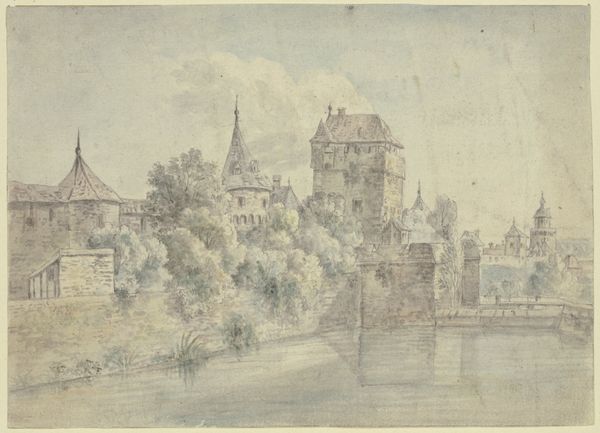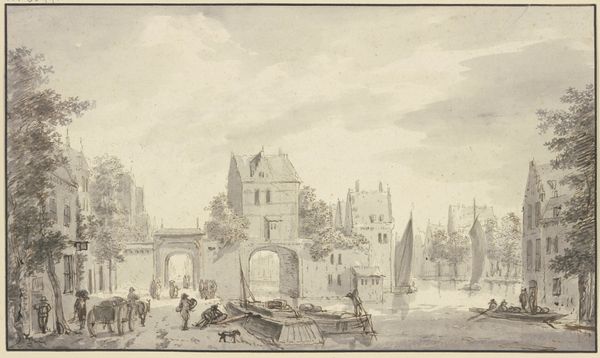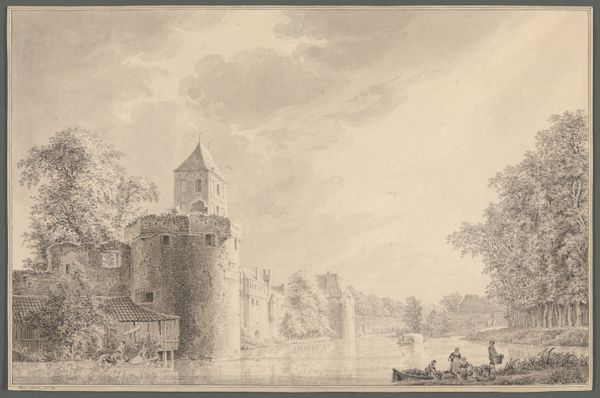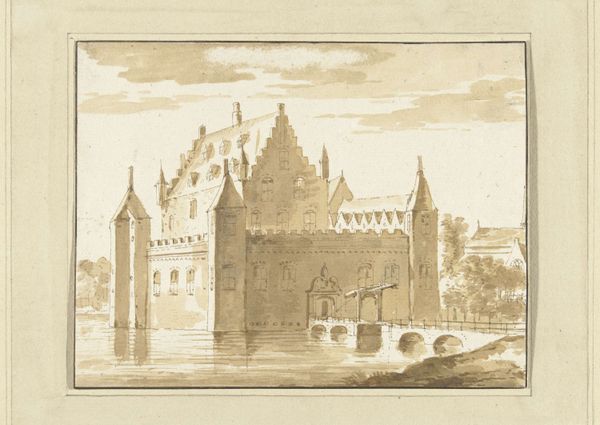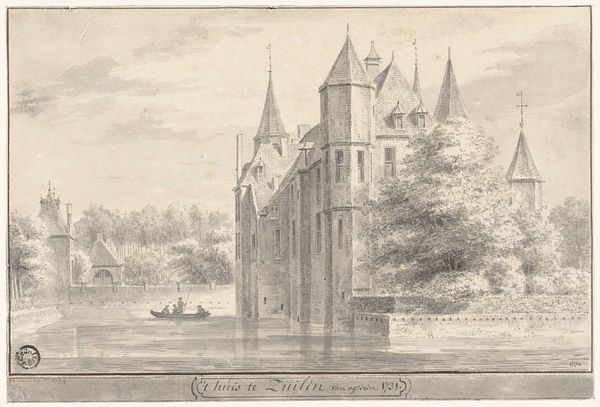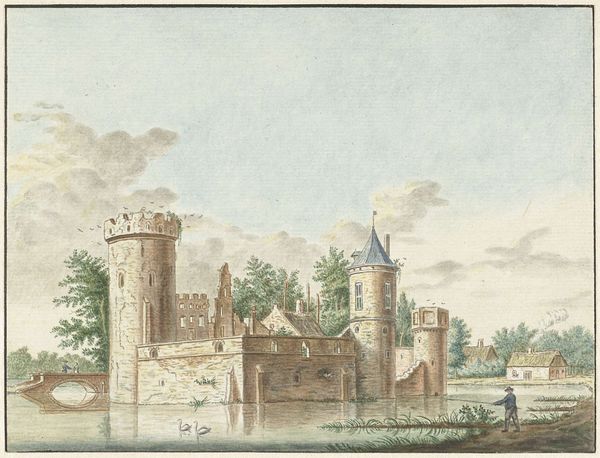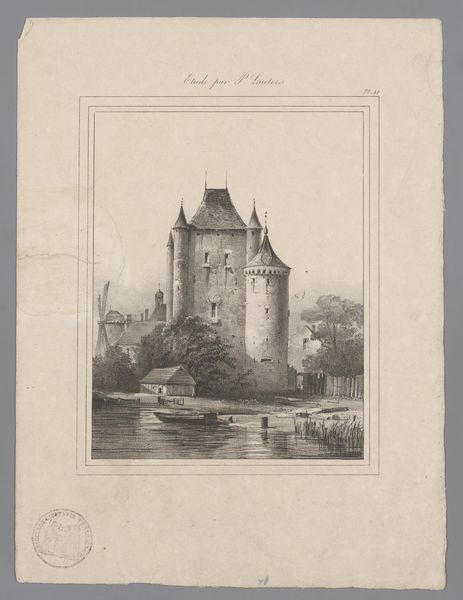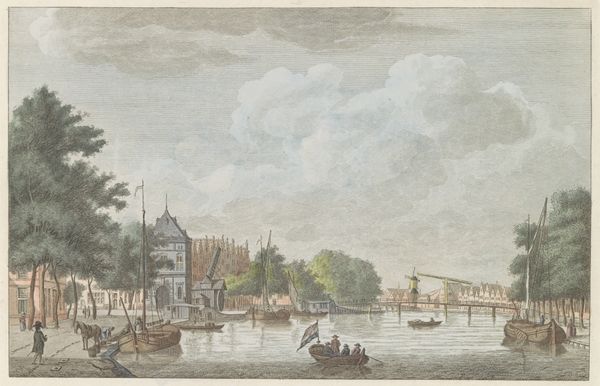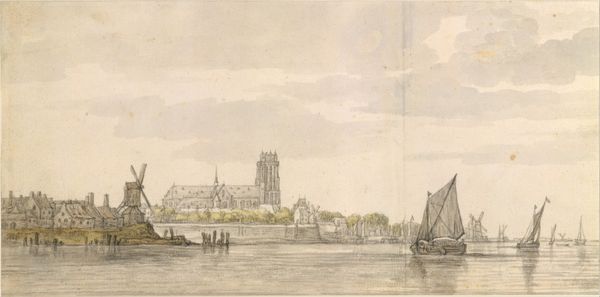
Dimensions: height 90 mm, width 115 mm
Copyright: Rijks Museum: Open Domain
Curator: Johann Heinrich Müntz created this delicate rendering of "Kasteel Kuilenburg" in 1769, using watercolor and pencil. What is your initial reaction? Editor: It evokes a feeling of serene nostalgia. The aged paper and faded washes create a dreamlike atmosphere. It almost seems like a memory being gently recalled. Curator: Yes, Müntz’s light pencil work indeed creates a sense of delicacy. The composition is also interesting – the castle itself is not centrally located, inviting the viewer's eye to wander. Editor: I agree, it pulls you into the everyday life surrounding the castle, as opposed to monumentalizing power. You notice the boats, the people. It humanizes the scene. And consider its role—was it created as a commissioned landscape, or more likely as a private sketch from his personal sketchbook? This difference strongly affects the audience and the intent of the piece. Curator: Intriguing question! Focusing on formal elements, observe how Müntz utilizes a restricted palette of grays and greens. It unifies the scene and emphasizes the architectural forms of the castle. There's also a nice contrast between the sharp lines of the buildings and the soft, blurry rendering of the trees. Editor: Contextually, what societal functions did artworks of landscapes serve back then? Were they tools to promote estates, or records of daily life that are valuable from today's viewpoint? Was Müntz simply trying to document or trying to romanticize? The placement of the figures in boats is also key - it shows mobility and highlights how important waterways were to life. Curator: Excellent point about societal function! We could even see a foreshadowing of the rise of Romanticism in the subdued color palette and emphasis on atmosphere over precise detail. It is a unique blend. Editor: Perhaps that ambiguity is the most compelling element; whether seen from the aesthetic interplay of shape and color or in a historical account, it reveals fresh perspectives on history and art’s capacity to connect to it. Curator: A thought that I find a good closing note: regardless of what he meant to convey or immortalize, its effects continue to reverberate throughout history and art.
Comments
No comments
Be the first to comment and join the conversation on the ultimate creative platform.

